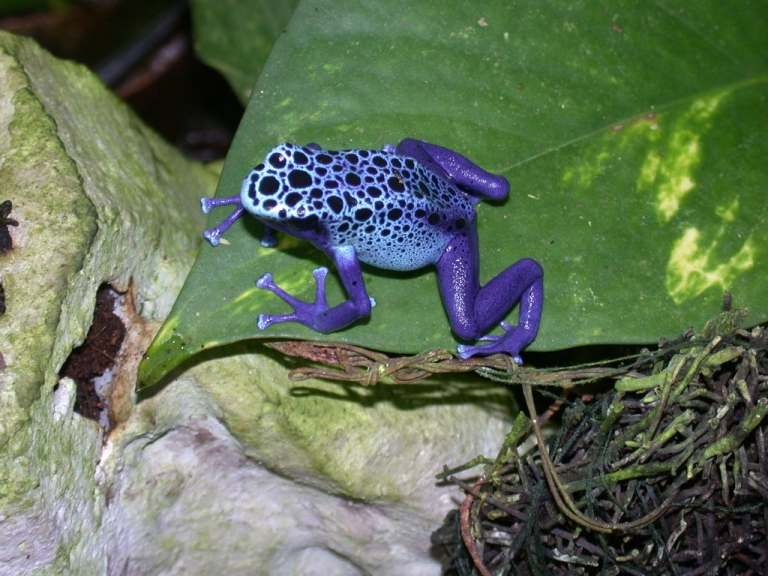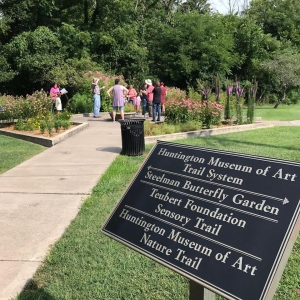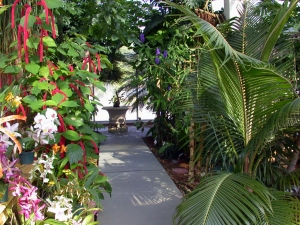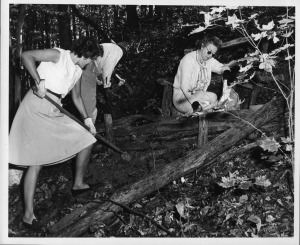
Nature has always been a key component of the mission at the Huntington Museum of Art in Huntington, West Virginia. With a nature trail, plant conservatory, and wheelchair-accessible sensory trail on the property, it celebrates nature and strives to educate.
But while the exhibition of art is chief among the missions that may spring to mind, nature has always played a leading role, says Cindy Dearborn, director of education at the museum.
“The museum has three pillars,” Dearborn said. “There’s art—of course, we are an art museum—nature, and education, too. But nature and art really are key parts of the museum.”

The museum trails, which include nearly two miles of pathway, were built by community volunteers, such as garden clubs and the Junior League, in the 1950s, and the sensory trail was established in 2008.
“In the beginning of the museum, the main idea really was this concept of enriching the lives of all the people,” Dearborn said.
“The group that was founding the museum had this plot of 52 acres, which is where they wanted the museum to be built, but of course, the museum doesn’t take up all that space. Nature was a key component to their plans.”
There are four trails on the property, each named after things visitors can see on the trails, such as spicebushes, tulip trees, and the gentle oak. The Steelman Butterfly Garden is a small offshoot from the path, which comes alive with various butterflies each year.
The Teubert Foundation Sensory Trail is a quarter-mile concrete path built for the visually impaired, with different informational markers in Braille. Because it’s sensory-based, there are places along the path dedicated to all the senses except taste, "which is probably a good thing," Dearborn said with a laugh.

“There is this accessible portion to the trail so that people who are in a wheelchair or even moms with little kids in strollers actually can still experience some of the nature without having to go on the rough part of the trail because the trails are really left in a natural state,” Dearborn said.
The museum recently received grant funding to complete the sensory trail. The original plan was to create an enclosed loop, but funds only covered the cost of half the sensory trail and connected it to the nature trails.
“We are very fortunate in that we just received a grant and also matching funds, where we are going to be able to enclose that and finish it off completely,” she said. “We’re looking forward to that. That project has a two- or three-year timeline.”
Native flowers and wildflowers grow along the museum’s nature trail. In the spring, visitors can spot trillium, Jack-in-the-pulpit, poppies, bluebells, and wild ginger. It’s something that has to be experienced to be appreciated, Dearborn said, and the museum only asks that people take only pictures and leave only footprints.
“You have to visit it often because things pop up at different times, and spring is really just a lovely time to visit the trails, especially when things start blooming,” she said. “It’s a hidden gem component people don’t really expect when they come to an art museum.”
Mike Beck, director of the museum's C. Fred Edwards Conservatory, underscored the mission to conserve nature. Opened in 1996, it is the only plant conservatory in West Virginia.

“It’s kind of like having your office in the Garden of Eden,” Beck said. “When I come in in the morning, I can tell who’s in bloom by the fragrance. I just enjoy working with the plants and animals; I’m a biologist, so it fits me pretty nicely.”
The conservatory is home to 215 species of subtropical and tropical plants. With the temperature above 65 degrees most of the year, four basic categories of plants are collected and thrive in the conservatory—orchids, agricultural or fruit-producing plants, fragrant plants, and some that are just plain unusual, Beck said.
People who visit the conservatory learn about plants they may not have seen before.
“We have plants that are inhabited by ants, and then we have some that are carnivorous that feed on insects or get their nitrogen from insects,” Beck said.
“My hope is that they would be able to see plants that they’ve probably experienced. For example, they’ve probably eaten a banana, but they may not have ever seen a banana plant. The same with coffee, vanilla, and chocolate, and then we have kumquats and lemons and that sort of thing.”
Because it would harm the animals in the conservatory, Beck said he doesn’t spray pesticides and instead uses beneficial insects.
“If I have an aphid infestation, for example, I’ll release ladybugs; that way, I don’t have to spray poison,” he said.
“We have several animals that live in there: we have fish, we have a coral reef aquarium, and we have poison dart frogs and Axolotl salamanders.”
The trails are open from dawn until dusk, all year round, even when the museum is closed, and the conservatory is open anytime the museum is open—Tuesdays from 10 a.m. to 8 p.m.; Wednesdays through Saturdays from 10 a.m.-5 p.m.; and Sunday from noon to 5 p.m.
Sign up to receive a FREE copy of West Virginia Explorer Magazine in your email weekly. Sign me up!




























